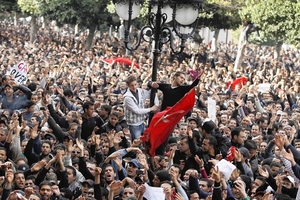Finance and feelings: The neural ‘pleasure centre’ at the heart of crowd behaviour

The crowds driving recent most striking events, from the Arab uprisings to the demonstrations against Vladimir Putin in Moscow, may at first sight appear to be socially and politically different. However, research presented in the Financial Times article ‘Crowd behaviour: United they stand’ argues otherwise.
Crowd behaviour reveals an area of study not only popular in sociology and psychology, but also in neuroeconomics.
Research by Michelle Baddeley, behavioural economist at Cambridge University, points out that crowd behaviour can occur in real and virtual crowds, sharing collectivity and a common identity. This means that while individuals in a physical crowd could take over other people’s behaviour as seen by the eye, online gamers and fund managers do the same behind their computer screen.
Moreover, Vasily Klucharev, neuroeconomics researcher at the University of Basel, examines the neurological component in financial decision-making. He finds that a part of our brain activates a “learning signal” at the moment we perceive our behaviour to be different from that of the crowd, triggering us to adjust ourselves to match the group. But which part of the brain is powerful enough to overpower the minds of individuals and generate the need to participate in a herd? Research shows that the neural network that includes the nucleus accumbens – more popularly known as the “pleasure centre” – is responsible.
- Access the article at the website of Financial Times (FT.com articles are only available to registered users and subscribers)

